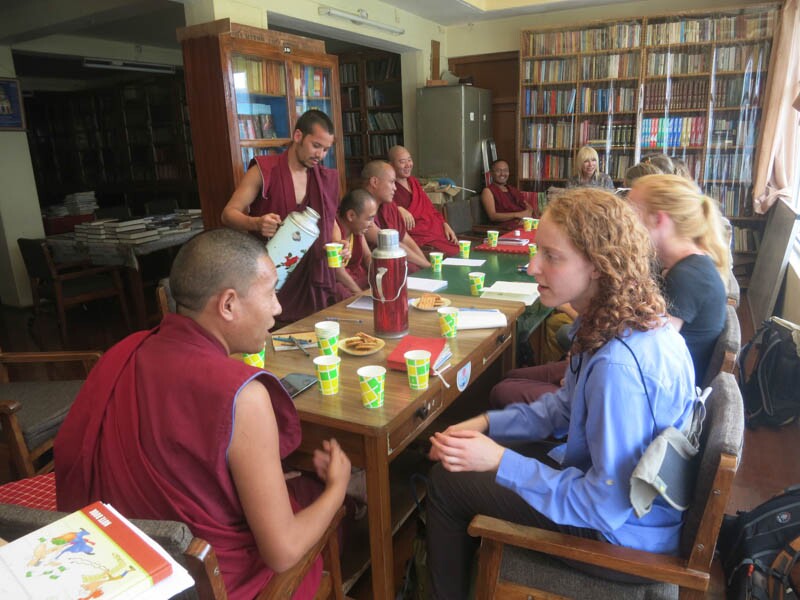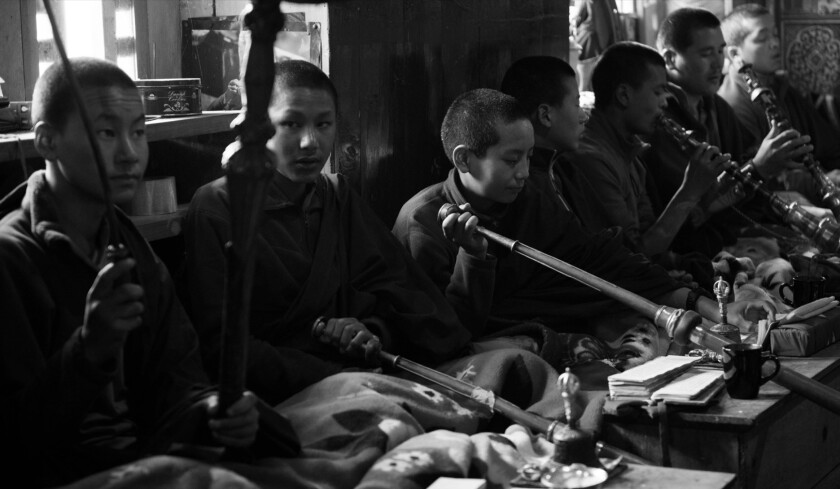One year after a destructive earthquake, students studied and documented their findings on art and culture in the Kathmandu Valley and Solukhumbu region of the Himalayas
After a deadly earthquake in Nepal postponed research in Kathmandu and the Khumbu region of the Himalayas, Professors Mark Graham and Tara Carpenter were redirected to northern India with their group of BYU students. One year later, in 2016, Graham and Carpenter traveled to Nepal with four graduate and five undergraduate students to complete their original field study. According to Graham, damage from the earthquake in the older, more fragile sections of Kathmandu, Patan and Bhaktapur underscored the urgency of documenting and studying these sites.

The Kathmandu Valley is listed as one of the UNESCO World Heritage Sites, and includes seven groups of monuments and buildings that display a wide range of historic and artistic achievements. One of the most significant cultural areas outside the Kathmandu Valley is the Solukhumbu region of the Himalayas, which is home to the Sherpa culture and its rich Buddhist traditions with roots in eastern Tibet. These two distinct geographical areas are where the field study took place. Field work included visits to schools, collaboration with art faculty and students from Kathmandu University, and study of sacred sites within Nepal.
The project followed three distinct lines of inquiry: (1) How do Buddhist and Hindu traditions co-mingle within religious practices and how are these practices reflected in art and schools? (2) How do resilience and adversity shape cultural and artistic traditions? (3) How does education, particularly art education, have an ecological focus within the construct of a critical place-based pedagogy? Students worked within these lines of inquiry under the direction of graduate student and faculty mentors.
Each student was mentored through the process of creating a proposal for professional conferences while the team was on site in India. Three of these proposals were accepted and presented in 2017 at the National Art Education Association annual conference. The group also designed and printed a book, titled The Hem of Enlightenment, and created a large exhibition of student and faculty work in the Harris Fine Arts Center on BYU campus.
Results and Findings
- Little is known or published about the relationship between the spiritual traditions of Nepal and art education within the country. This study contributed to knowledge in this area primarily through school visits and interviews with teachers and school leaders.
- The spiritual dimensions of education (often called holistic education) are an important but often neglected part of school curricula. Students compiled extensive literature in this area along with observations of Tibetan schools in Nepal and India that is being applied within school sites in Utah.
- Because of the scattering of Tibetan art and culture, this study provided information about Tibetan religious and artistic traditions within Nepal and India as well as a unique window into the resilience of Tibetan culture, primarily through interviewing Tibetan refugees and visiting Tibetan artisans.
In reflecting on his field study experience Clark Goldsberry, an art education graduate student, said his view of the world has expanded.
“My eyes have been opened to rich cultures, new and unbelievable landscapes, physical demands of living, various languages, beautiful people, unexpected poverty, religious truths, and different ways of teaching and learning,” Goldsberry said. “Yet with all these new experiences and differences I have learned most importantly how much we as human beings are all equal.”
This field study was funded by a grant from the Laycock Center for Creative Collaboration in the Arts and a Graduate Mentoring Grant.

